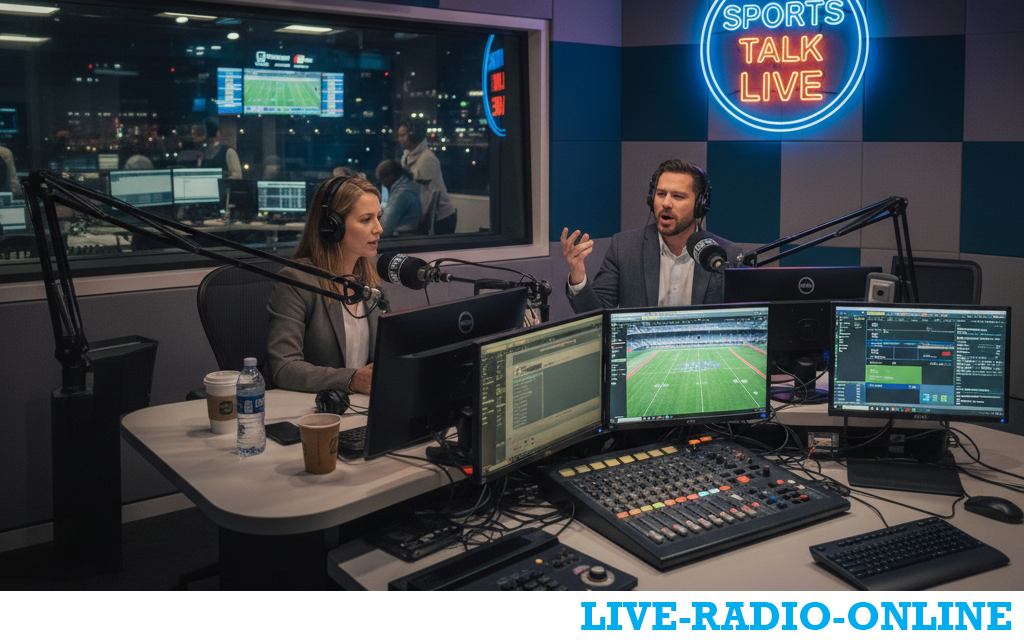
Yes, sports radio remains very popular and profitable, but its audience is changing and it faces significant challenges from new media.
Think of it not as a dying medium, but as one that has successfully carved out a resilient and loyal niche.
Here’s a breakdown of its popularity:
The Case FOR Its Continued Popularity
-
Loyal and Engaged Audience: Sports radio attracts a dedicated, primarily male, and often older demographic (35+). These listeners are not passive; they are passionate fans who crave deep analysis, debate, and a sense of community.
-
Localism and "Water Cooler" Effect: It serves as a virtual water cooler for a city's sports fans. The discussion is hyper-local—focusing on the hometown team's last game, the latest trade rumor, or the coach's decisions. This is something national podcasts often can't replicate with the same intensity.
-
Live and Interactive: The core appeal is its live, unscripted, and interactive nature. Listeners can call in to voice their opinions, argue with hosts, and feel like they are part of a conversation. This immediacy is powerful, especially during breaking news or right after a big game.
-
Companionship and Personality-Driven: The most successful shows are built around strong host personalities (e.g., Mike Francesa, Dan Patrick, Colin Cowherd). Listeners form a parasocial relationship with these hosts, tuning in daily as if they were catching up with a knowledgeable friend.
-
Profitable and Viable for Advertisers: It delivers a specific, targeted audience to advertisers (sports betting, car dealerships, local businesses, beer), making it a reliable revenue stream for radio stations.
The Challenges and Shifting Landscape
-
Competition from Digital Media: This is the biggest challenge. Fans can now get:
-
Instant News: From Twitter/X and sports apps.
-
On-Demand Analysis: From thousands of sports podcasts on specific teams, leagues, or topics.
-
Visual Content: From YouTube highlights, ESPN+, and league-specific streaming services.
-
-
Changing Listening Habits: The rise of streaming music (Spotify, Apple Music) and podcasting has eaten into traditional radio's overall listenership, especially among younger demographics.
-
Aging Demographic: The core audience for terrestrial sports talk radio is older. Attracting the next generation of listeners, who are used to on-demand and visual content, is a constant challenge.
-
National vs. Local: While localism is a strength, national sports networks and podcasts can draw big audiences with star power and high production values, competing for listeners' attention.
How Sports Radio is Adapting
To stay relevant, the industry is evolving:
-
Simulcasting and Streaming: Most major shows are now also video simulcast on YouTube or the station's app, recognizing the need for a visual component.
-
Creating Podcasts: Radio segments are repackaged as podcasts, and many hosts have their own dedicated podcast networks.
-
Embracing Social Media: Hosts use Twitter, Instagram, and Facebook to promote shows, engage in debates, and clip out viral moments.
-
Integrating New Topics: While still focused on sports, successful shows now blend in pop culture, politics, and lifestyle topics to broaden their appeal.
Conclusion
Is sports radio broadcast popular?
Yes, but its popularity is now more niche than it was in its late-90s/early-2000s heyday.
It's no longer the only place for sports debate and analysis, but it remains a vital, thriving, and profitable medium for a large and dedicated audience. Its success hinges on the strength of its local connection, the personalities of its hosts, and its ability to adapt to the digital world. For a fan who wants live, interactive, and deeply local sports conversation, it has no true equal.
Most popular radio?


